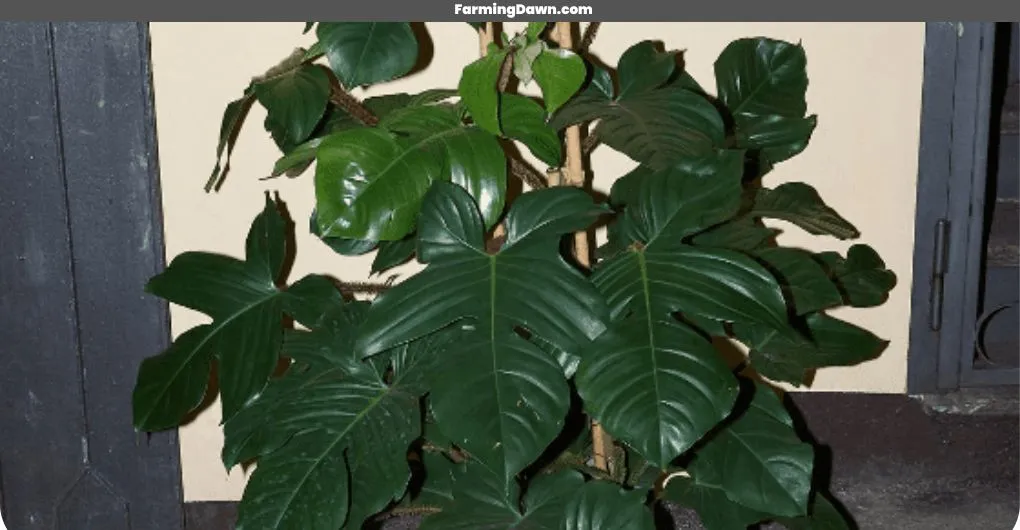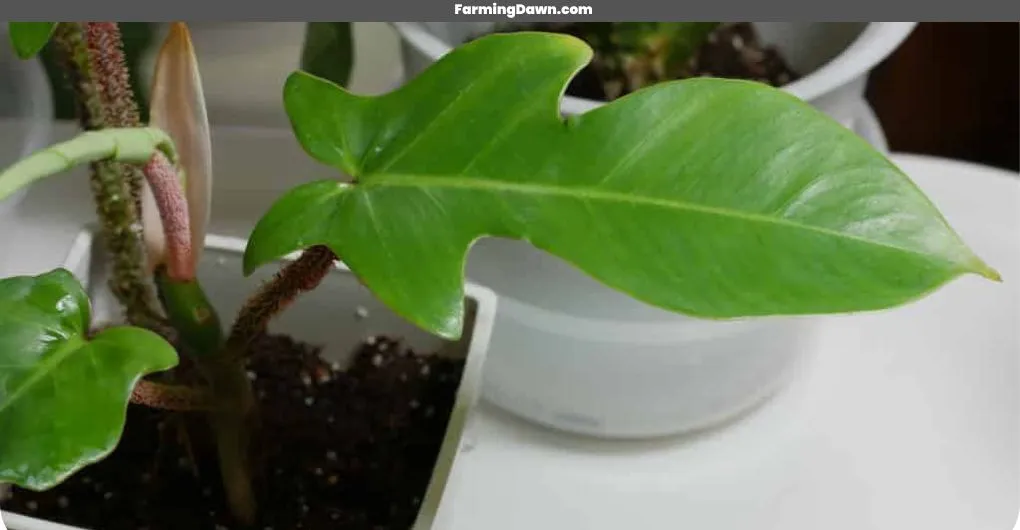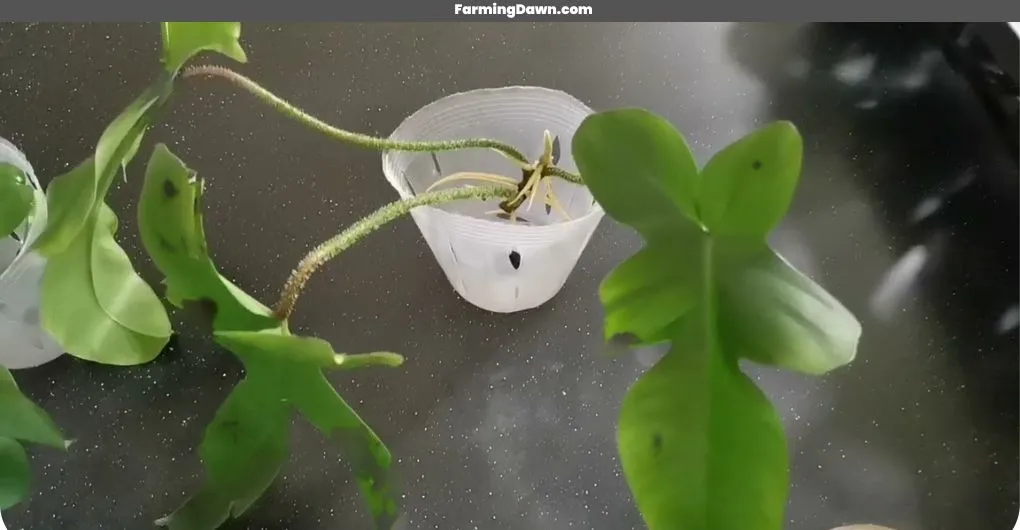As a fellow plant enthusiast, I’m sure you’ve come across Philodendron squamiferum before. This popular houseplant is known for its beautiful foliage and its easy-care nature. But do you know all the fascinating facts about this incredible plant?
In this article, we’ll be going over an overview of P. squamiferum, as well as care instructions, propagation methods, varieties, and similar plants. So if you’re looking to learn more about this amazing species, then keep reading – let’s dive in!
As much as I love talking about plants (I think it’s safe to assume that applies to most of us!), I also understand how overwhelming it can be trying to figure out where to start when learning about a new species.
That’s why with this article I want to give you a comprehensive look into the world of P. squamiferum so that by the end you will have a better understanding of what makes them unique and how best to take care of one. Let’s get started!
Overview Of Philodendron Squamiferum
The Squamiferum Philodendron is a species of tropical plant. It’s an amazing type of philodendron that has gorgeous foliage and grows in many different climates.
The leaves are usually dark green or burgundy with wavy ripples along the edges, perfect for any home decor setting. Its name comes from its scaly-looking leaves, making it quite unique compared to other philodendrons. It’s easy to care for this plant as long as you provide it with plenty of bright light and water regularly.
Related: How to take care of Hoya Linearis?

Here take a quick overview of this beautiful plant.
| Common Name | Red bristle philodendron |
| Botanical Name | Philodendron squamiferum |
| Family | Araceae |
| Type | Vine, Perennial |
| Size | 5-6 feet tall |
| Sun Exposure | bright but indirect sunlight, |
| Soil Type | Well-drained sandy-textured soil mixed with sphagnum moss or coco coir |
| Soil pH | Slightly Acidic (5.6-6.5) |
| Bloom Time | May to July |
| Flower Color | White |
| Hardiness Zones | 9-11 (USDA) |
| Origin | South and Central America, French Guiana, Suriname, and northern Brazil |
| Toxicity | Toxic to pets and people |
How To Take Care Of A Philodendron Squamiferum?
Having discussed the general overview of Squamiferum, let’s now discuss what it takes to keep these plants happy and healthy. Caring for a P. squamiferum is relatively straightforward; they need lots of indirect sunlight and regular watering.
With proper care and attention, your squamiferum will thrive! Let’s discuss the different factors necessary for the successful growth of a squamiferum.
See more: How to care for Philodendron Burle Marx

Water Requirements
Watering your plant every 7-10 days is usually sufficient; however, if temperatures are particularly warm then more frequent watering may be necessary. The soil should be kept lightly moist without becoming soggy or overly dry.
It’s important to note that this species tends to not like having wet feet so take extra caution when doing any additional watering during hotter weather conditions. Also, make sure you’re misting your leaves regularly as they love humidity.
Fertilizer Needs
It’s important to keep your philodendron plant happy and healthy, which means it needs the right kind of fertilizer. When you buy a Squamiferum, it will come with its own special blend that has everything it needs for maximum growth potential.
If you want to save some money though, there are other brands of fertilizer available at various prices. Whatever option you choose, be sure to follow the instructions carefully so as not to over or under-fertilize your plant, something we all want to avoid!
Remember: when looking after your plants properly, they’ll grow strong and stay beautiful for years to come, making them well worth the price tag.
Tips For Pruning & Training
Now that we’ve covered the fertilizer needs of philodendron squamiferum, let’s move on to pruning and training. Pruning your philodendron can really help it thrive, as it encourages healthy new growth and helps keep the plant looking neat and tidy.
Start by using sharp scissors or garden shears when trimming off any dead leaves from around the base of the plant. You could also use a moss pole like those specifically made for squamiferum to train your plant’s stems up along with some twine if needed.
This will give you more control over how tall your philodendron gets while helping to support its branches so they don’t droop. Be careful though not to tie them too tight as this can damage their delicate stems!
How To Propagate Philodendron Squamiferum?
Propagation of squamiferum is just as essential as caring for this plant. In this section, I will discuss 3 different methods for propagation:
- Cuttings
- Water propagation
- division
All of these techniques are great for propagating Squamiferum Philodendron. Let’s get started!
Learn more: How to propagate Hoya sunrise?

Cuttings
Cuttings is the most common propagation technique for this plant. Simply take a stem cutting from an existing one, remove any leaves near the base of the stem, put in some fresh potting soil with moistened perlite and keep it warm by providing indirect sunlight.
You can also root cuttings directly into water to speed up growth, just make sure to change out the water every week or two! It may take several weeks before you see roots but once they appear you’ll be able to transplant your new philodendron into its own pot and enjoy watching it grow even more!
Water Propagation
If you’re looking to speed up the propagation process for your squami philodendron, then water propagation is a great option. All it takes is some fresh potting soil with perlite and a glass jar filled with warm water that’s been moistened.
Then just take a stem cutting from an existing one, remove any leaves near the base of the stem and place into the jar, making sure not to submerge any leaves!
In just a few weeks, you’ll see roots appear ready to be transplanted into its own pot. Water propagation will help get those beautiful new plants growing faster so you can enjoy them even sooner!
Division
Once you’ve got your water propagation down pat, there’s another way to get more plants, division! It may be a little bit intimidating at first, but it can actually be pretty simple.
Sure, if you’re growing a Philodendron Squamiferum Red or some other type of rare plant that could cost you an arm and a leg, then maybe don’t try this one. But for most common houseplants like the Squamiferum, it’s totally doable.
Just grab two shovels (or even better yet two friends!) and work together to gently split the roots apart. Before you know it, you’ll have twice as many beautiful plants in half the time. Who knows? You might just make propagating into your new favorite hobby!
Philodendron Squamiferum Varieties And Similar Plants
While there are not many varieties available, but still you can find something that will fit perfectly into your home or garden. Here is list of different varities if this plant:
- P. Squamiferum Red Bristle
- P. Squamiferum Silver Sword
- P. Squamiferum Gold Sword
- P. SquamiferumMini
- P. Squamiferum Giant
- P. Squamiferum Dragon Tail
- P. Squamiferum Variegated
- P. Squamiferum Mottled
Please note that this is not an exhaustive list and there may be other named varieties out there as well. So, keep on researching and find the best one for yourself.
Common Issues With Philodendron Squamiferum And Their Solutions
It’s a common misconception that Philodendron Squamiferum is indestructible, but this couldn’t be further from the truth! In fact, these plants are quite susceptible to certain pests and diseases.
From scale insects and mealybugs to root rot and leaf spot disease, it pays to familiarize yourself with what can potentially harm your beloved squamiferum. Fortunately for those of us who don’t have an advanced degree in plant pathology, there are some tell-tale signs and symptoms you should look out for.
Yellowing leaves, wilting stems or stunted growth all point towards something being amiss. So keep a close eye on your philodendrons and take swift action if necessary; we’d hate to see any of them suffer needlessly!
Solutions
Taking care of a philodendron squamiferum, or hairy philodendron, can be tricky business. But don’t worry – I’m here to help! If you find that your plant is wilting, it could mean one of two things: either the soil is too dry, or the temperature in its current environment isn’t quite right.
To make sure this doesn’t happen again, water your plant generously and keep them away from drafts and air-conditioning vents. If the leaves are turning yellow instead of staying green, try adding some mild fertilizer to boost growth.
And lastly, if any pests should appear on your squamiferum (which hopefully won’t be the case!), use an insecticidal spray to get rid of them quickly and safely. With these troubleshooting tips at hand, you’re ready to tackle any issues that may arise with keeping your hairy philodendron healthy and happy!
Frequently Asked Questions Related To Squamiferum
Is Philodendron squamiferum rare?
It is considered a relatively rare plant and it can be difficult to find for purchase. Its scarcity is due to a combination of factors, including its limited natural distribution in the wild, slow growth rate, and the fact that it can be challenging to propagate.
Does Philodendron Squamiferum like humidity?
Yes, P. squamiferum thrives in high humidity environments. It is native to the tropical rainforests of South America, where it grows in humid conditions with consistent moisture. Providing adequate humidity is important for the health and growth of this plant.
Does squamiferum need a moss pole?
While a moss pole is not strictly necessary for P. squamiferum, it can be helpful in promoting vertical growth and providing support for the plant. If you choose not to use a moss pole, you can still grow the plant by allowing it to trail or spread out over the edge of a container.
How big does Philodendron squamiferum get?
Squamiferum is a moderately sized plant that can grow up to 5-6 feet tall and 2-3 feet wide under ideal conditions.
Final Thoughts
To sum up, philodendron squamiferum is an amazing and beautiful houseplant that makes a great addition to any home. Its lush foliage, tropical appeal, and easy care needs make it the perfect plant for even inexperienced gardeners who are looking to add some life to their living spaces.
If you provide proper care, this plant can thrive in almost any environment with minimal effort on your part. Though pest and disease issues may crop up from time to time, troubleshooting them isn’t too difficult as long as you stay vigilant about monitoring your plants’ health.
So if you’re looking for a unique way to bring a bit of the tropics into your home, consider giving P. squamiferum a try! You won’t regret it.






